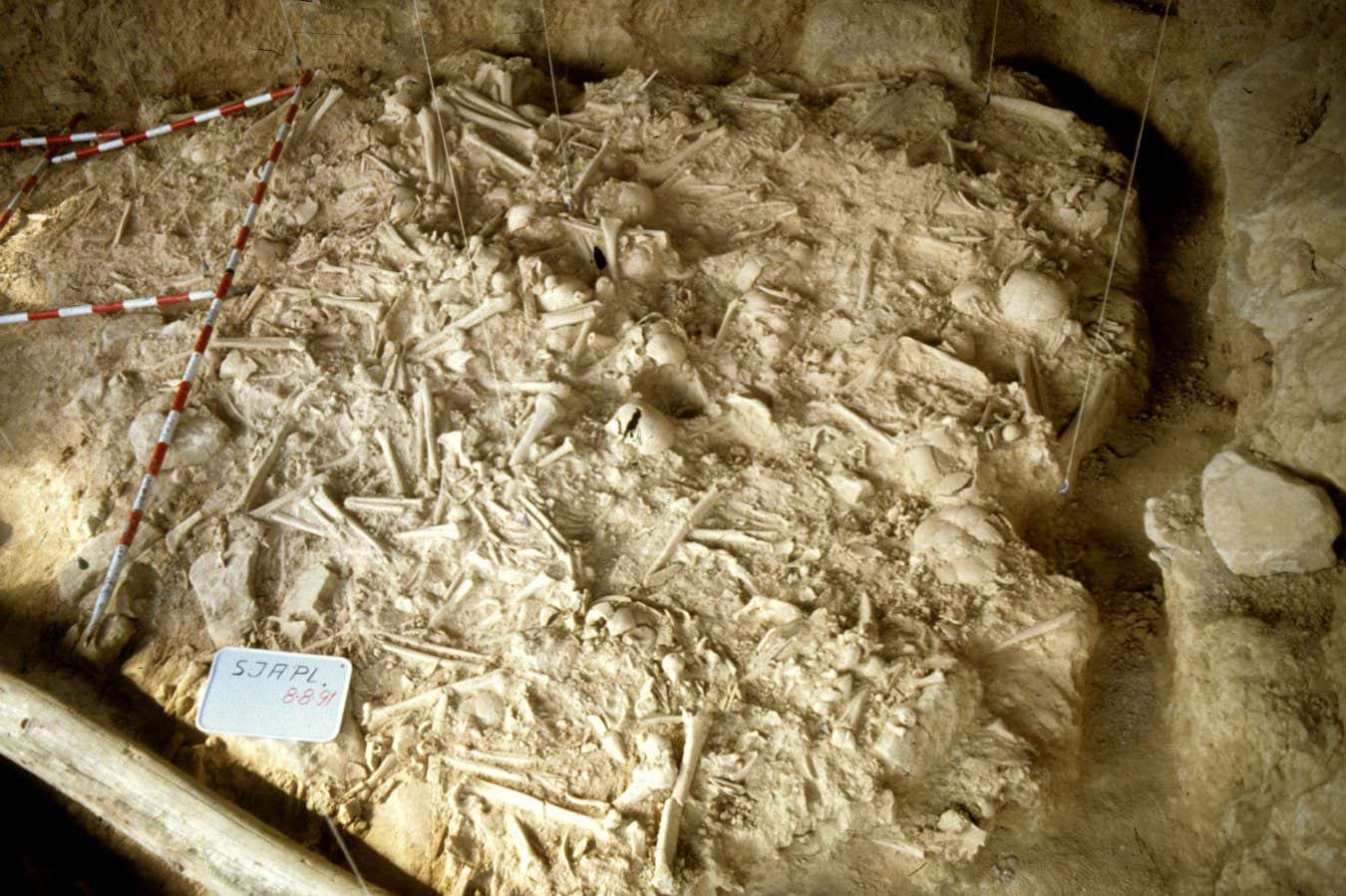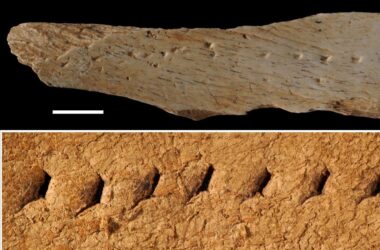Stone Age people were engaged in warfare in Europe over 5000 years ago, much earlier than previously thought. The evidence comes from a re-analysis of human remains found at a burial site in northern Spain. The bones, predominantly male and showing signs of injuries from stabbing and blunt-force trauma, suggest the existence of a warrior class. The scale of the conflict indicates early warfare rather than just interpersonal conflicts or skirmishes.
The burial site, known as San Juan ante Portam Latinam, was accidentally discovered in 1985. Radiocarbon dating indicates that the bones were buried between 3380 and 3000 BC, during the European Neolithic period. The site, occupying an area of about 20 square meters, contains densely packed human bones, including complete and partial skeletons, as well as stone weapons.
Previously interpreted as the remains of a massacre, the re-analysis by Rick Schulting at the University of Oxford and his colleagues suggests that San Juan ante Portam Latinam represents evidence of sustained conflict rather than a single event. At least 338 individuals are estimated to be interred at the site, with 23% showing visible injuries. The wounds include unhealed and healed injuries, indicating prolonged conflict, with the majority of injuries caused by blunt-force trauma.
Furthermore, the remains indicate a male-biased warrior class, with a higher proportion of males, particularly young males, than expected in an indiscriminate massacre. The researchers argue that this reflects a common pattern found in many societies.
The reasons for the conflicts are still uncertain, but there are indications of different political and social communities living in close proximity. The researchers also found evidence of malnourishment and poor health indicators, suggesting a stressful period.
This study adds to the growing understanding of the early Neolithic period as a time of significant stress, likely driven by competition over resources and changes in societal structures. Previous research has shown that violence was endemic in Neolithic Europe and sometimes led to the complete destruction of communities.
Insights:
- Stone Age people in Europe were engaged in warfare over 5000 years ago, indicating that conflicts occurred earlier than previously believed.
- The analysis of human remains at the San Juan ante Portam Latinam burial site suggests the presence of a warrior class, as evidenced by the predominantly male bones with injuries from stabbing and blunt-force trauma.
- The scale of the conflict, along with the presence of stone weapons, indicates that it was not just interpersonal conflicts or skirmishes, but early warfare.
- The San Juan ante Portam Latinam site represents evidence of sustained conflict rather than a single massacre, with visible injuries indicating prolonged conflict and male-biased casualties.
- The conflicts may have been caused by different political and social communities living in close proximity, possibly competing over resources.
- This study contributes to the understanding of the early Neolithic period as a time of significant stress, with violence being endemic and capable of wiping out entire communities.








